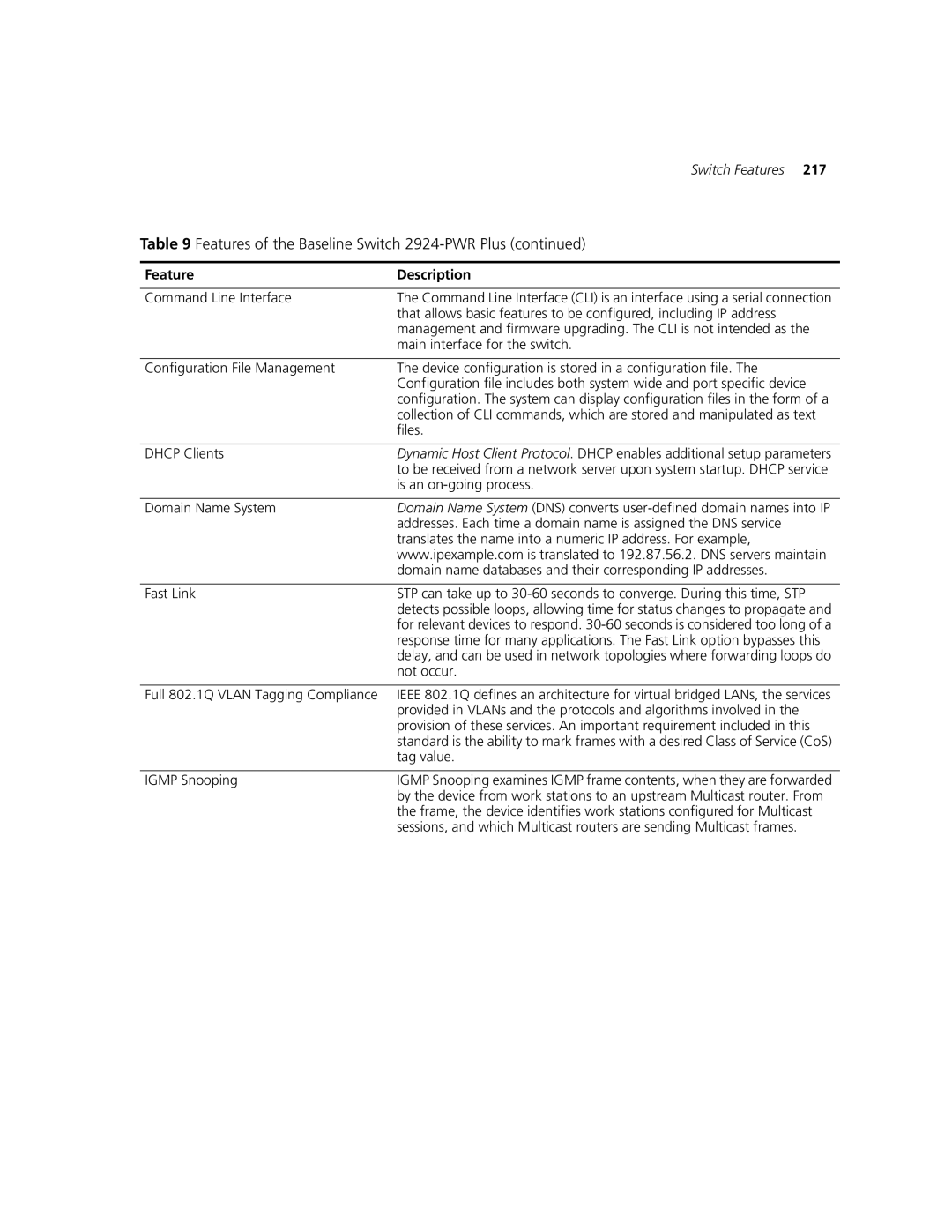Switch Features 217
Table 9 Features of the Baseline Switch 2924-PWR Plus (continued)
Feature | Description |
|
|
Command Line Interface | The Command Line Interface (CLI) is an interface using a serial connection |
| that allows basic features to be configured, including IP address |
| management and firmware upgrading. The CLI is not intended as the |
| main interface for the switch. |
|
|
Configuration File Management | The device configuration is stored in a configuration file. The |
| Configuration file includes both system wide and port specific device |
| configuration. The system can display configuration files in the form of a |
| collection of CLI commands, which are stored and manipulated as text |
| files. |
|
|
DHCP Clients | Dynamic Host Client Protocol. DHCP enables additional setup parameters |
| to be received from a network server upon system startup. DHCP service |
| is an |
|
|
Domain Name System | Domain Name System (DNS) converts |
| addresses. Each time a domain name is assigned the DNS service |
| translates the name into a numeric IP address. For example, |
| www.ipexample.com is translated to 192.87.56.2. DNS servers maintain |
| domain name databases and their corresponding IP addresses. |
|
|
Fast Link | STP can take up to |
| detects possible loops, allowing time for status changes to propagate and |
| for relevant devices to respond. |
| response time for many applications. The Fast Link option bypasses this |
| delay, and can be used in network topologies where forwarding loops do |
| not occur. |
|
|
Full 802.1Q VLAN Tagging Compliance | IEEE 802.1Q defines an architecture for virtual bridged LANs, the services |
| provided in VLANs and the protocols and algorithms involved in the |
| provision of these services. An important requirement included in this |
| standard is the ability to mark frames with a desired Class of Service (CoS) |
| tag value. |
|
|
IGMP Snooping | IGMP Snooping examines IGMP frame contents, when they are forwarded |
| by the device from work stations to an upstream Multicast router. From |
| the frame, the device identifies work stations configured for Multicast |
| sessions, and which Multicast routers are sending Multicast frames. |
